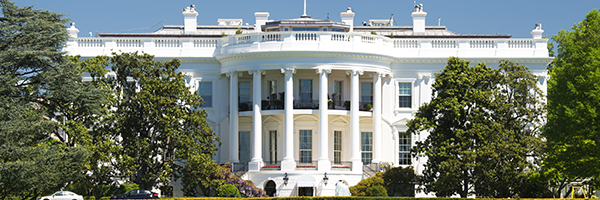
November 15, 2024 | Daily JAM, Videos |
Today’s video is Fed One and Done in December? On November 13, the CPI inflation numbers showed inflation ticking up slightly, but the market still believes the Fed will cut rates again in December. On November 13, the CME Fedwatch tool had it at 83% odds we’ll get a cut and I think it’s almost certain. However, when the Dot Plot forecast of GDP, inflation, and interest rates is released in December, I think we’ll see much more uncertainty for the future and likely a planned pause. The three major factors poised to affect the economy are a substantial tax cut, high tariffs and the possibility of mass deportations promised by the president-elect. While two of those items may cancel each other out–with tax cuts being massively stimulative and tariffs cutting into growth by 1.5-2 percentage points while raising costs for consumers, the question of deportations remains. Mass deportations could result in a huge labor shortage and disruptions to supply chains, leading to higher prices. The economy will be under a lot of inflationary pressure from these potential policies and it’s likely the Fed will announce a pause until they see how this all shakes out.

November 13, 2024 | Daily JAM, Morning Briefing |
Inflation ticked up slightly on an annual basis in October, the latest evidence that further reductions in inflation are getting hard to achieve. The Consumer Price Index climbed 2.6% from a year earlier, up from September’s 2.4% annual rate, the Bureau of Labor Statistics reported today. Core inflation, which strips out more volatile food and energy prices, held steady at 3.3% annual rate.

November 11, 2024 | Daily JAM, Short Term |
Look out for more volatility in the bond market. BlackRock, JPMorgan Chase. and TCW Group have all warned that the bumpy ride is likely far from over. But also expect that the big overall trend for 2024 of rising bond prices and falling yields on hopes for aggressive interest rate cuts from the Federal Reserve is done.

November 7, 2024 | Daily JAM, Morning Briefing |
The Federal Reserve lowered interest rates on Thursday by a quarter of a percentage point. The cut was the second this year, following on a larger than usual 50 basis point cut in September. The size of this cut was expected by the financial markets. Wall Street is expecting another 25 basis point cut at the central bank’s December 18 meeting. With the cut and its size so widely expected investors and traders were left trying to find policy hints in the Fed’s words. The pickings were rather slim.

November 6, 2024 | COP, CVS, Daily JAM, LLY, Special Reports, UNG |
When I posted the previous version of this Special Report back on September 30, I wrote: “I don’t know which candidate will win the election. Right now the polls are within the margin of error on the national level–and even tighter in the seven battleground states that will likely decide the election. But I do know the results on November 5 will move stocks. Some right off the bat even before the results are certified. And more significantly as a new administration clarifies its policy views and takes office.” That has changed just a bit with last night’s victory by Donald Trump. We do know who won and will be the President come January 20. And we do know whose policies will move stocks and the financial markets in general. So let’s see if I can bring my picks and strategic advice up to date.

November 3, 2024 | Daily JAM, Morning Briefing |
In normal times, the November 7 meeting of the Federal Reserve’s interest-rate setting body, the Open Market Committee would be the big event of the week. But these aren’t normal times in case you haven’t noticed. The country faces a stark choice on Tuesday and the polls show essentially a dead heat. And then add in fears that Donald Trump and/or his followers won’t accept the election results if he loses. Traders and portfolio managers have been adding hedges to protect against market volatility in the days around the election.

November 1, 2024 | Daily JAM, Morning Briefing |
The U.S. economy added 12,000 jobs in October. The unemployment rate, which uses a different survey method, held steady at 4.1%. The Bureau of Labor Statistics revised the August and September reports to take a total of 112,000 jobs off earlier estimates. The average job growth over the past three months is now 104,000, down from 189,000 over the six months before that. The revised data and the October estimate are both more in line, in my opinion, with what is likely to have been happening in the economy as the result of high interest rates from the Federal Reserve. I thought hugh interest rates should have been slowing the economy more than the initial data suggested. And now it it looks like those high rates were working much more in line with past history of the economy. Of course, the big question today is should we believe the October report

October 31, 2024 | Daily JAM, Morning Briefing, Short Term |
The Federal Reserve’s preferred measure of U.S. inflation, the Personal Consumption Expenditures (PCE) price index, fell to a 2.1% annual rate in September.

October 29, 2024 | Daily JAM, Morning Briefing |
The Conference Board’s gauge of confidence jumped 9.5 points to 108.7, the highest level since the start of the year, data released Tuesday showed. The median estimate in a Bloomberg survey of economists called for a reading of 99.5. The month to month increase was the biggest since March 2021.

October 22, 2024 | Daily JAM, Morning Briefing, Short Term |
Two-year Treasury yields have climbed 34 basis points since the Federal Reserve reduced interest rates on September 18 for the first time since 2020. Rising yields “reflect the reduced probability of recession risks,” Steven Zeng, an interest rate strategist at Deutsche Bank told Bloomberg. “Data has come in pretty strong. The Fed may slow the pace of rate cuts.” We’ve read this story before

October 10, 2024 | Daily JAM, Morning Briefing |
Today, both the headline and the core CPI, which excludes food and energy, came in 0.1 percentage point higher than forecast for the month, with a month to month 0.2% increase in the headline index and a 0.3% rise for the core.On an annual basis, the headline index rose 2.4% in September, slightly less than the 2.5% in August. The core inflation rate, the more important number to the Federal Reserve, accelerated for the first time in one and a half years, to 3.3% from 3.2%. Weekly initial claims for unemployment also came out today, Thursday, October 10, and showed a much-bigger-than-expected increase of 258,000, against the median forecast for 230,000. Together the two reports almost cemented the odds of a 25 basis point cut in interest rates when the Fed meets on November 7.
October 7, 2024 | Daily JAM, Morning Briefing |
It’s not surprising that stocks fell Monday, October 7. But it is surprising that they fell so little. The Standard & Poor’s 500 was off 0.96% on the day. The NASDAQ Composite dropped 1.18%. Wall Street’s favorite volatility gauge–the VIX–jumped to “just” a two-month high. Look at the negatives arrayed against stocks












